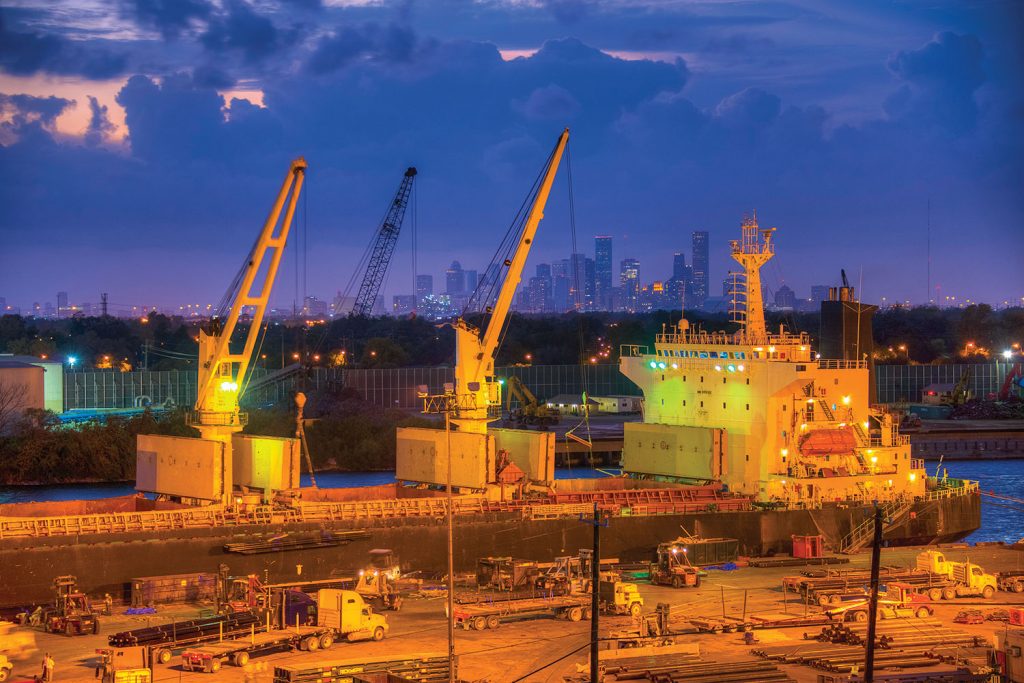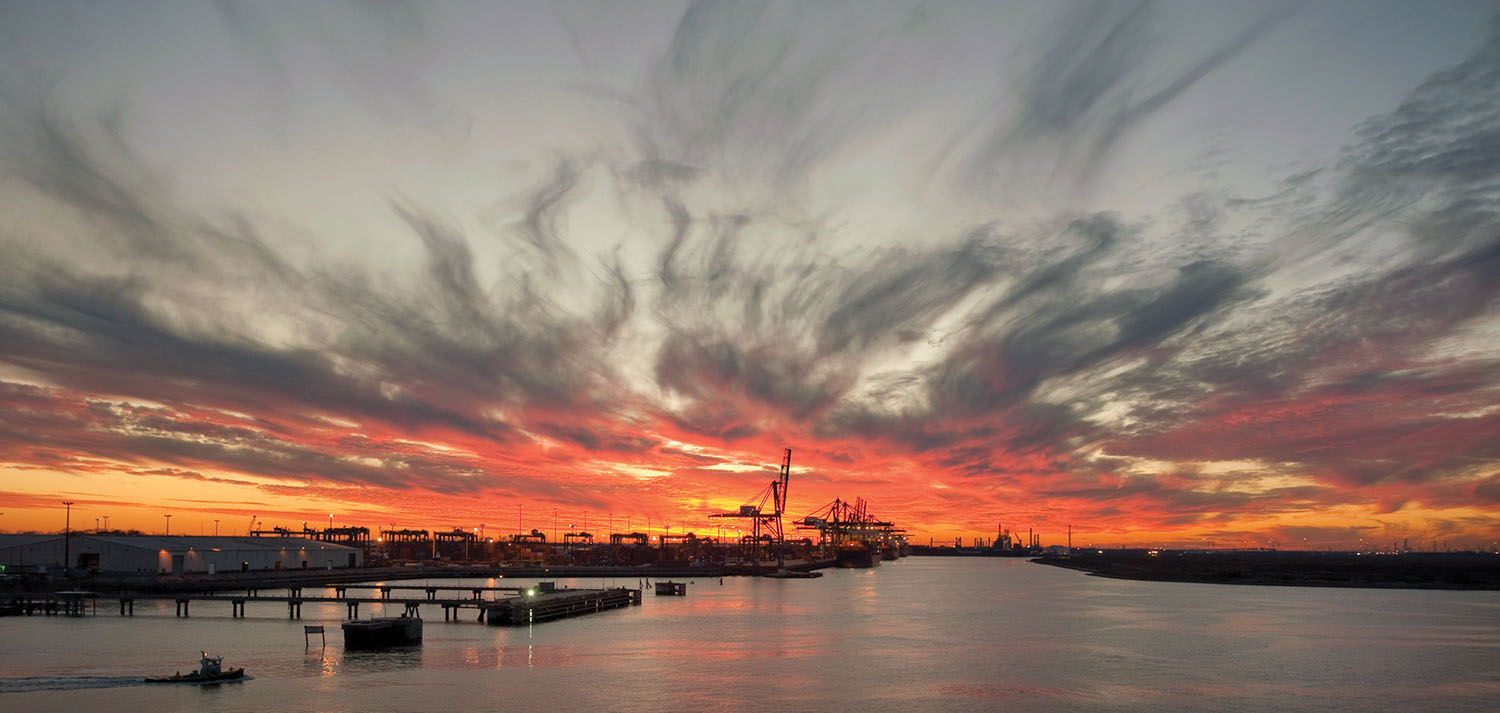Port Houston is a sprawling port complex located on the strategic Houston Ship Channel, a waterway dating to 1914 that connects the Gulf of Mexico, the Gulf Intracoastal Waterway, the San Jacinto River and Buffalo Bayou.
As with all things Texas, the port complex is huge. It stretches 25 miles—roughly half the entire length of the ship channel—and connects close to 200 public and private terminals. The Port of Houston Authority owns, operates, manages or leases the eight public terminals in the complex, including container terminals at Barbours Cut and Bayport and cargo terminals at the Turning Basin, Care, Jacintoport and Woodhouse.
From the barge fleets in Channelview to the towering container and cargo ships steaming past Galveston Island, the port—and the city and region it serves—handles a wide range of cargoes, from grains, manufactured goods, resins and other petrochemical products to oil and gas. The port handles around a quarter-billion tons of cargo annually.
According to data compiled by the Corps of Engineers’ Waterborne Commerce Statistics Center, the Port of Houston handled 260 million tons of cargo in 2017, with 173 million tons of foreign cargoes and 87 million tons of domestic goods. That ranked second nationally for total tons in a year, just behind the Port of South Louisiana’s 275 million tons. Port Houston is the top export tonnage port in the country and ranks first in total imports.
Close to 9,000 vessels called on the Port of Houston in 2018, combining for a whopping 20,000 vessel movements within the port. According to the port, that’s as many as the vessel movements as the ports of Los Angeles, Long Beach and New York/New Jersey combined. In addition to ship movements, operators within the Port of Houston handle some 215,000 barges annually.

This past spring, the port released an economic impact study detailing how crucial Port Houston is not just to Texas but to the nation as a whole. That study, conducted by economist John Martin of Martin Associates, found that in 2018 the greater Port of Houston was responsible for 10 percent of all jobs tied to U.S. coastal ports. In addition, activity within the Port of Houston accounted for close to 21 percent of the state of Texas’ total gross domestic product in 2018.
More broadly, the Houston Ship Channel in 2018 represented more than $800 billion in economic value for the United States and supported 3.2 million jobs. In total, that amounted to $38 billion in tax revenue. Just within the state of Texas, the ship channel had a $339 billion economic impact in 2018, generated $5.6 billion in tax revenue for state and local municipalities, and supported 1.3 million jobs.
A major growth point for Port Houston is containers, with the port handling close to 1.5 TEUs (twenty foot equivalent units) in the first half of 2019. That amounts to a 12 percent jump over the same period in 2018. The port accounts for nearly 70 percent of all containers moved in U.S. Gulf Coast ports, with much of that growth fueled by the petrochemical industry and plastic resins.
Reflecting that growing demand, Houston has gained two new container services over the past few months. The 2M Alliance (Maersk and MSC) began offering a transpacific all-water service with a Houston call in September, and CMA CGM launched a MedCaribe service with Marfret in the summer, with connections between Houston, Mexico, Costa Rica, the Caribbean and the Mediterranean.
To handle its continued container growth, the commission of the Port of Houston Authority approved an order for three Neopanamax electric cranes for the Bayport Container Terminal.
In addition to that, the port continues to advocate for the Houston Ship Channel Expansion Channel Improvement Project, which the Corps continues to study. The plan would widen the ship channel from 530 feet to 700 feet, which would maintain two-way traffic even for today’s larger tankers and container ships. Port Houston is the non-federal sponsor of the study.
According to port officials, the Corps of Engineers is expected to complete the study by the spring of 2020, hopefully in time for the project to be authorized in a potential Water Resources Development Act of 2020.




